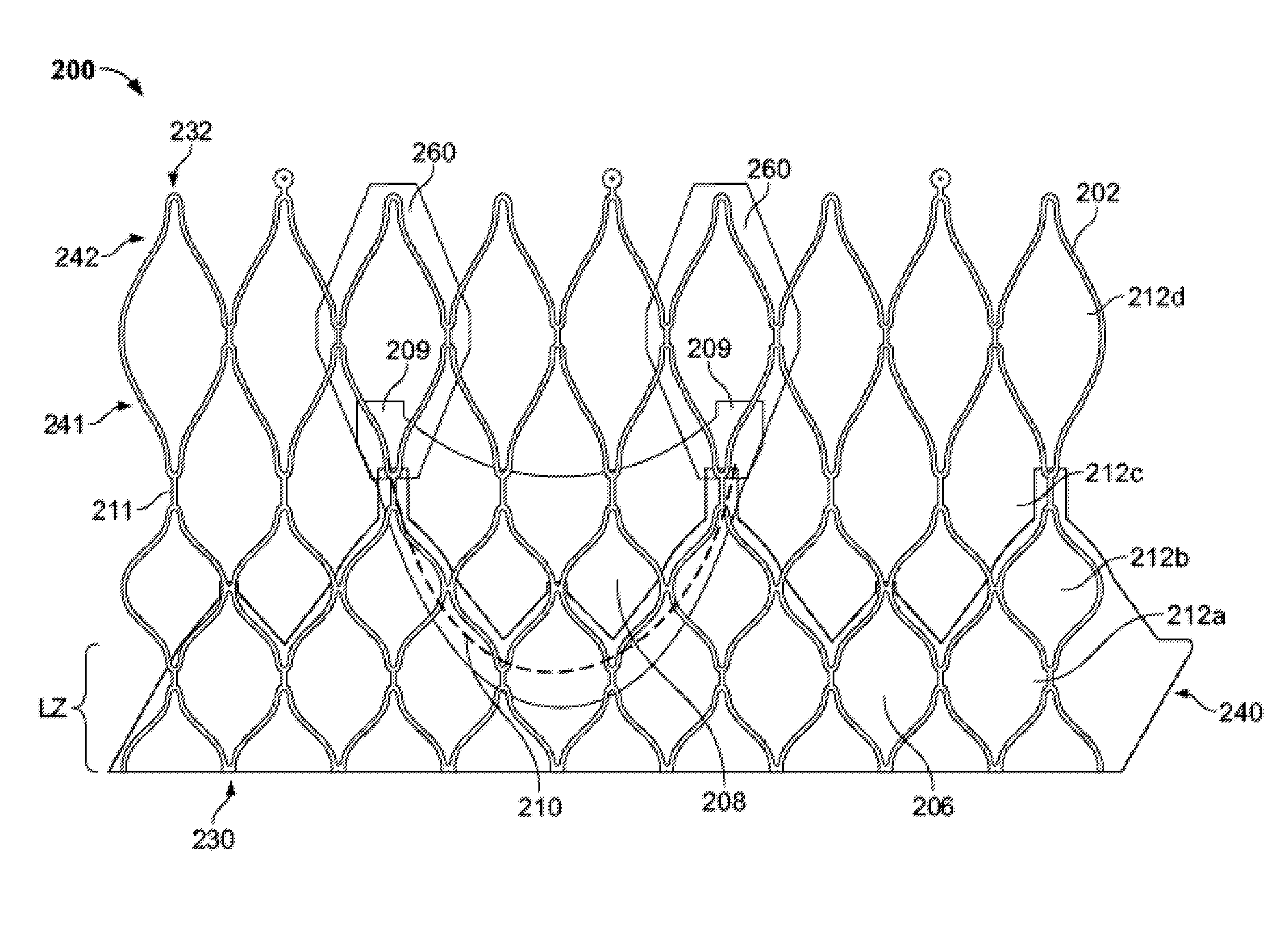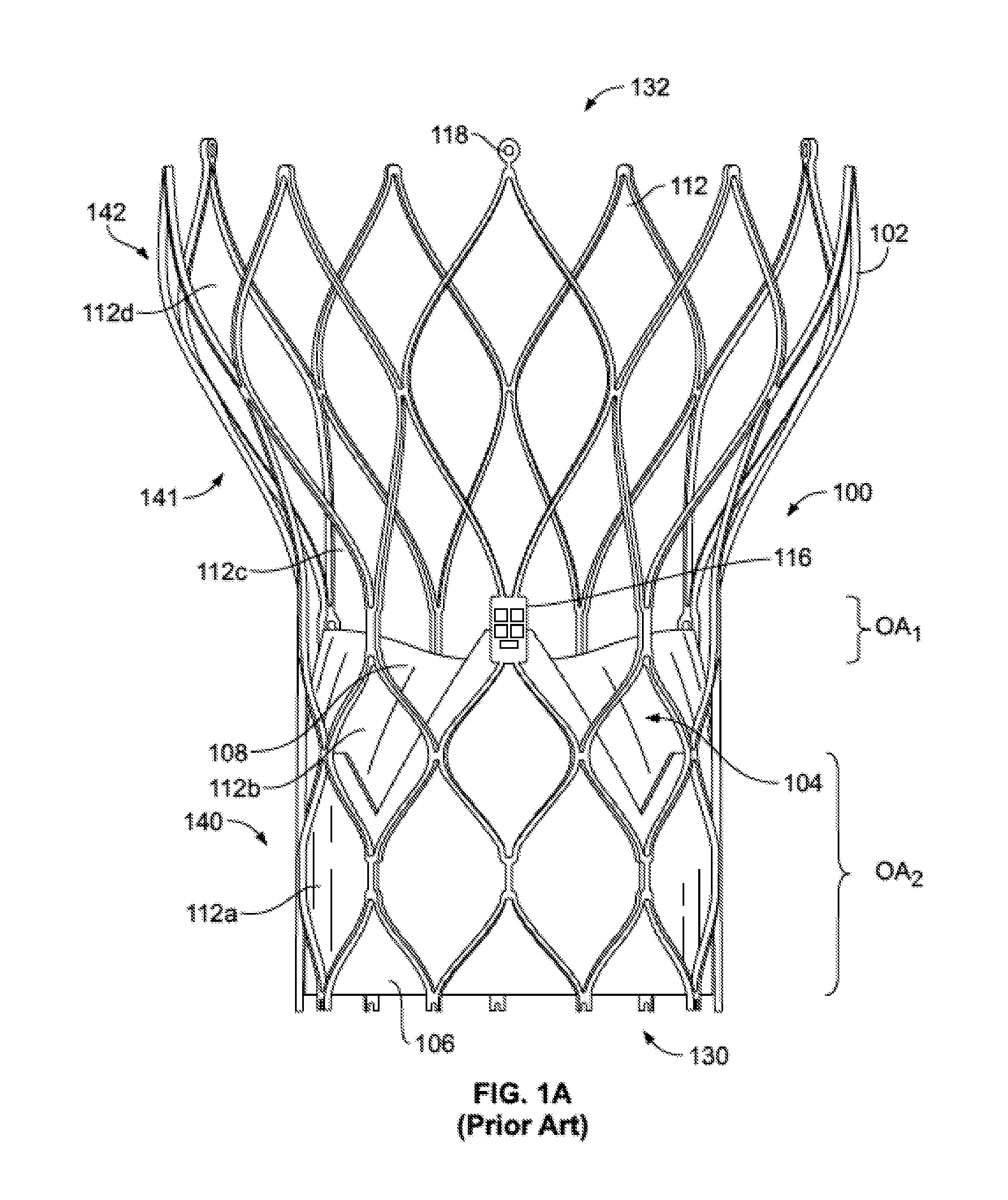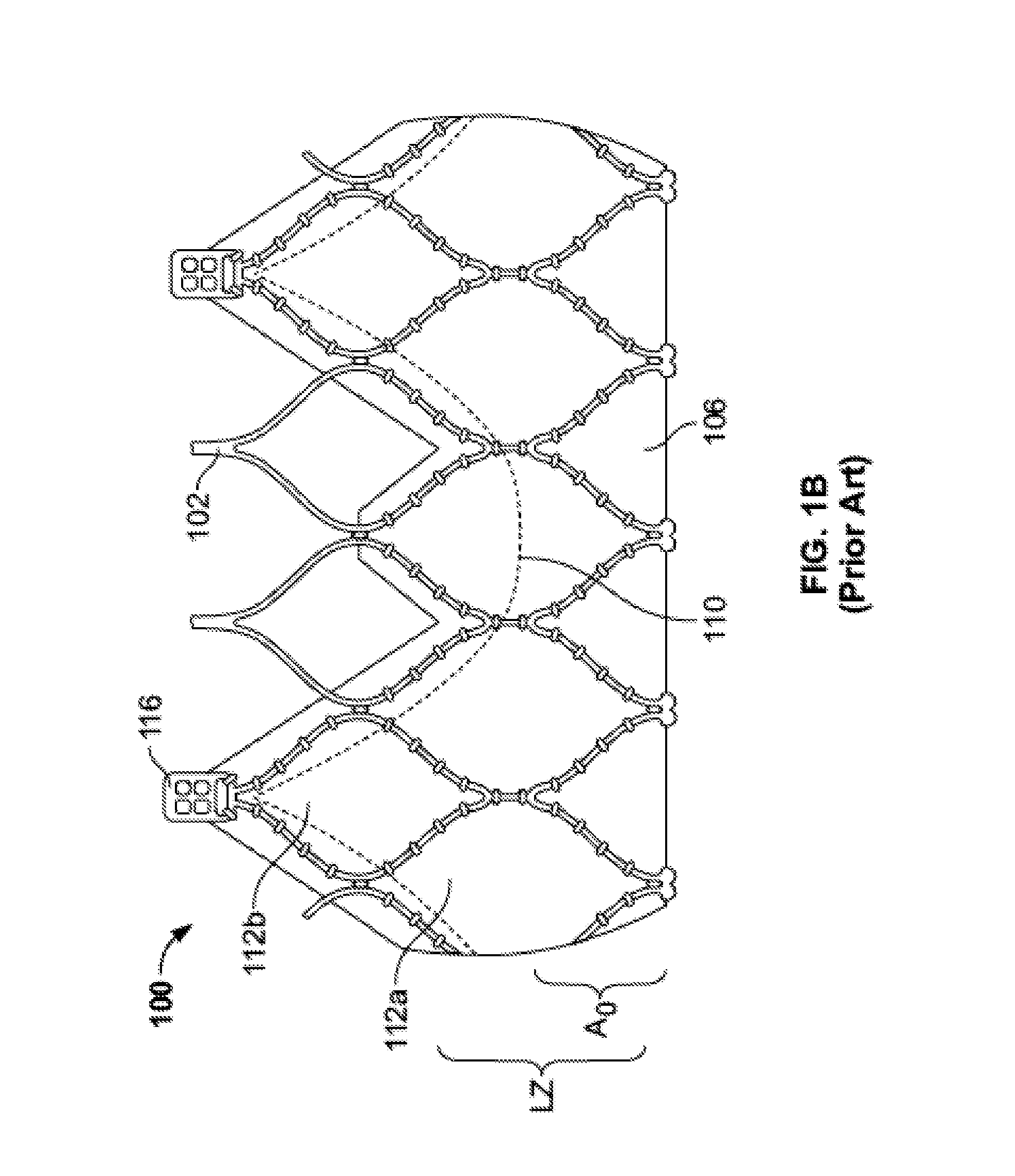Reduced profile prosthetic heart valve
a prosthetic heart valve and profile technology, applied in the field of heart valve replacement, can solve the problems of reducing cardiac efficiency, affecting performance, and putting a greater strain on the heart muscle, so as to increase the available space, and reduce the profile of the prosthetic heart valv
- Summary
- Abstract
- Description
- Claims
- Application Information
AI Technical Summary
Benefits of technology
Problems solved by technology
Method used
Image
Examples
Embodiment Construction
[0032]As used herein, the term “proximal,” when used in connection with a prosthetic heart valve, refers to the end of the heart valve closest to the heart when the heart valve is implanted in a patient, whereas the term “distal,” when used in connection with a prosthetic heart valve, refers to the end of the heart valve farthest from the heart when the heart valve is implanted in a patient. The term “circumferential,” when used in connection with a prosthetic heart valve, refers to the direction around the perimeter of the valve. The term “leading end,” when used in connection with a suture, refers to the end initially advanced through a material, while the term “trailing end” refers to the opposite end.
[0033]FIG. 1A shows a collapsible stent-supported prosthetic heart valve 100 known in the art. The prosthetic heart valve 100 is designed to replace the function of a native tricuspid, bicuspid or unicuspid valve of a patient, such as a native aortic valve. It should be noted that w...
PUM
 Login to View More
Login to View More Abstract
Description
Claims
Application Information
 Login to View More
Login to View More - R&D
- Intellectual Property
- Life Sciences
- Materials
- Tech Scout
- Unparalleled Data Quality
- Higher Quality Content
- 60% Fewer Hallucinations
Browse by: Latest US Patents, China's latest patents, Technical Efficacy Thesaurus, Application Domain, Technology Topic, Popular Technical Reports.
© 2025 PatSnap. All rights reserved.Legal|Privacy policy|Modern Slavery Act Transparency Statement|Sitemap|About US| Contact US: help@patsnap.com



